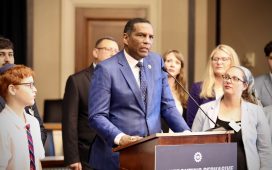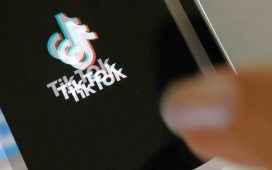A new study reveals that LGBTQ+ college students have been uniquely impacted by the ongoing COVID-19 pandemic. Published Tuesday by UCLA’s Williams Institute and the Point Foundation, the report finds that LGBTQ+ students are vulnerable to a variety of COVID-related inequities, including disproportionate rates of hospitalization and widespread housing insecurity during the pandemic.
While the ongoing pandemic has upended the lives of virtually all students, LGBTQ+ students were more likely to be directly impacted by COVID-19. Transgender students were six times more likely (5.5%) than cisgender students (0.9%) to report being hospitalized with the novel coronavirus. Additionally, 27.7% of LGBTQ+ students of color reported that a family member had been hospitalized with COVID-19, as opposed to 23.1% of non-LGBTQ+ students of color, 17.5% of white LGBTQ+ students, and 10.0% of white non-LGBTQ+ students.
While most students reported that instruction went online during the pandemic, not all were able to rise to the challenge equally. Nearly 10% of LGBTQ+ students reported not having reliable internet and a quiet space to complete online instruction, as compared to 3.3% of non-LGBTQ+ students. Shockingly, nearly a third of trans students (30.6%) reported lacking internet access and a study space.
Additionally, nearly two-thirds of trans students (65.1%) reported that their ability to pursue their studies was worse than before the pandemic, as compared to 38.5% of all students.
College frequently represents the first opportunity LGBTQ+ students have to express their identities, just one reason why only 39.6% of LGBTQ+ students reported living with their parents before the pandemic as compared to more than half of non-LGBTQ+ students. But this means that nearly a third of LGBTQ+ students (30.9%) experienced housing disruptions due to the pandemic than non-LGBTQ+ students (16.9%). This includes the 3.0% of LGBTQ+ students who reported having nowhere to live, as opposed to only 0.8% of non-LGBTQ+ students.
When it came to continuation of education, LGBTQ+ students were actually less likely to take a leave of absence, change schools, or reduce their course load during the pandemic. Only 20.4% of LGBTQ+ students said COVID-19 affected their enrollment status, as compared to 26.7% of non-LGBTQ+ students.
Lastly, 30.7% of LGBTQ+ students and 36.3% of non-LGBTQ+ students reported experiencing financial disruption due to the pandemic, including loss of financial aid, jobs, internships, financial support from family, or needing to get a job. The report speculates that student loans — which 53.5% of LGBTQ+ students and 38.4% of non-LGBTQ+ students said they’ve taken out — may have provided a “buffer” from financial hardship for some.
The report was based on data from the Access to Higher Education Survey, which polled 1,079 students ages 18-40 in January and February.
Ultimately, researchers concluded that colleges and universities must consider those without a familial safety net, LGBTQ+ or not, in preparations for future disasters. This is especially pertinent to housing: Even though parents can be a source of stability, the study noted that living with unaccepting parents can be “challenging” for LGBTQ+ students.
“Meeting the specific needs of such students is critical to avoiding disruptions in their education and widening pre-existing education gaps,” the researchers wrote.
Get the best of what’s queer. Sign up for them.’s weekly newsletter here.








